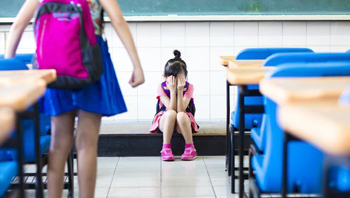Nov 14: Getting bullied in school days may increase the risk of obesity in adults. A recent research found that children who are bullied in school are likely to be overweight in their adult age than the non-bullied ones.
 The study further suggested that children who were chronically bullied in school are 1.7 times overweight as young adults than non-bullied children. Previous research by the team at King's has shown that children who experienced bullying while growing up in the 1960s were more likely to be obese at the age of 45, yet it was unclear whether these long-term effects were present earlier in life.
The study further suggested that children who were chronically bullied in school are 1.7 times overweight as young adults than non-bullied children. Previous research by the team at King's has shown that children who experienced bullying while growing up in the 1960s were more likely to be obese at the age of 45, yet it was unclear whether these long-term effects were present earlier in life.
In this new study, the researchers set out to examine whether bullying in a modern context would have similar effects on weight, given that it may take different forms today (e.g. cyberbullying) than it did in the 1960s. The environment children grow up in today has also changed, with unhealthy food more readily available and sedentary lifestyles more common.
The researchers analysed data from the Environment Risk (E-Risk) Longitudinal Twin Study, which has followed more than 2,000 children in England and Wales in 1994-1995 from birth to age 18. They assessed bullying victimisation in primary school and early secondary school through interviews with mothers and children at repeated assessments at the ages of 7, 10 and 12.
When the children were aged 18, the researchers measured their body mass index (BMI) and waist-hip ratio, an indicator of abdominal fat. They found that 28% of children in the study had been bullied in either primary school or secondary school (defined as transitory bullying), and 13% had been bullied at both primary and secondary school (defined as chronic bullying).
Children who were chronically bullied in school were 1.7 times more likely to be overweight as young adults than non-bullied children (29% prevalence compared to 20%). Bullied children also had a higher BMI and waist-hip ratio at the age of 18.
These associations were independent of other environmental risk factors (including socioeconomic status, food insecurity in the home, child maltreatment, low IQ, and poor mental health). In addition, and for the first time, analyses showed that children who were chronically bullied became overweight independent of their genetic risk of being overweight.
Finally, at the time of victimisation, bullied children were not more likely to be overweight than non-bullied children, indicating that overweight children were not simply more likely to fall victim to bullying.
Dr Andrea Danese from the Institute of Psychiatry, Psychology & Neuroscience (IoPPN) at King's College London, said: "Bullying is commonly associated with mental health problems, but there is little research examining the physical health of bullied children. Our study shows that bullied children are more likely to be overweight as young adults, and that they become overweight independent of their genetic liability and after experiencing victimisation."
Jessie Baldwin, also from the IoPPN at King's, said: "Although we cannot definitively say that bullying victimisation causes individuals to become overweight, ruling out alternative explanations, such as genetic liability, strengthens the likelihood that this is the case. If the association is causal, preventing bullying could help to reduce the prevalence of overweight in the population.
"As well as preventing bullying, our findings emphasise the importance of supporting bullied children to prevent them from becoming overweight, which could include interventions aimed at promoting exercise and healthy eating. Our data suggest that such interventions should start early in life."





Comments
Add new comment